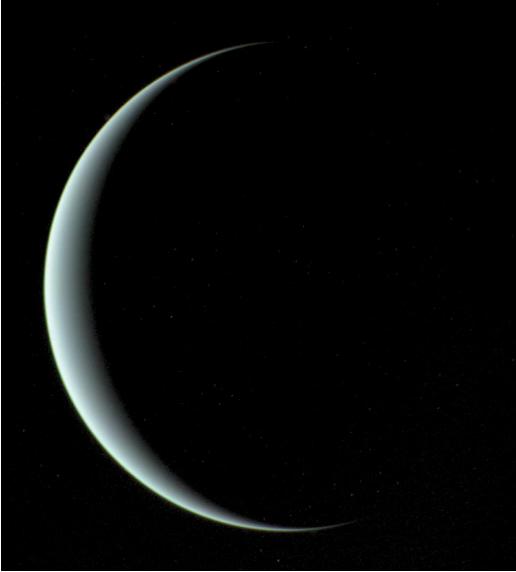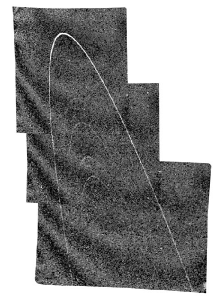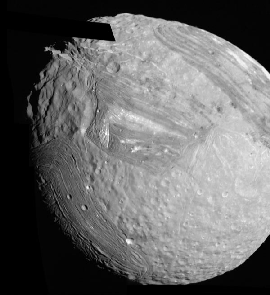 |
|
|
|
||
 |
||
Facts about Uranus • Uranus is the 7th planet from the Sun. Diameter: 31,764 miles Distance from Sun: 1,783,950,000 miles Atmosphere: 83% hydrogen gas, 15% helium gas and 2% methane gas Moons: Uranus has a few dozen moons. The largest is Titania with a diameter of exactly 1,000 miles, orbiting the planet every 8.7 days at a distance of 271,100 miles. Observing in a small telescope: In a small telescope, Uranus appears as a small, pretty blue-green disk. You need magnifications of 100x or more just to see a hint of a disk. To find it, it is best to use a computerized GOTO telescope that can automatically move to any object chosen from a list in its hand-controller. It is possible to see Uranus with binoculars and distinguish it from similar magnitude stars by its color. |
 |
|||
THE PLANET URANUS Uranus was discovered by Sir William Herschel of England in 1781 while he was exploring the sky, recording nebulae and galaxies. When he came across Uranus, he thought that he had discovered a comet. However, after several months of observation, Anders Lexell, a mathematician, calculated its orbit and found that it was completely outside Saturn’s orbit. It was a new planet! No one had expected to find more planets. Many moons and more Uranus’ pale blue color comes from a small amount of methane in its atmosphere. Like the other gas giants, its atmosphere is composed mainly of hydrogen gas, aurorae occur at its poles and lightning flashes within its atmosphere. The temperature at its cloudtops is –373° F. Soup and Cyclops Uranus was named after one of the earliest supreme gods in Greek mythology, who was the father of the Cyclops. William Herschel had proposed that his new planet be named after King George III of England, but the international consensus was to keep the names of the planets based in mythology. Observing Uranus Although Uranus can just be seen with the unaided eye, it is indistinguishable from other 5th and 6th magnitude stars. The easiest way to find Uranus is to use a computerized GO TO telescope that will automatically move to Uranus after this planet is chosen from a list in the hand controller. Otherwise, use a planetarium software program to find its location. During the years 2000 to 2050, Uranus moves east from the constellation Capricornus to Leo. |
 |
||||
Uranus has nine faint but distinct ringlets that are shrouded in dust. Most of Uranus’ rings are believed to be composed of yardstick-size boulders. |
|||||
 |
|||||
Images of Miranda, Uranus’ 5th largest moon. Voyager 2 was able to get closer to this moon than any other in the solar system. Its surface astounded astronomers because its terrain is so varied. There are light and dark areas, as well as scarring that may have been created by a combination of earthquake and volcanic activity. Miranda is 293 miles in diameter. |
|||||
What’s Out Tonight? is sponsored by Ken Press, publisher of astronomy books and charts. |
||